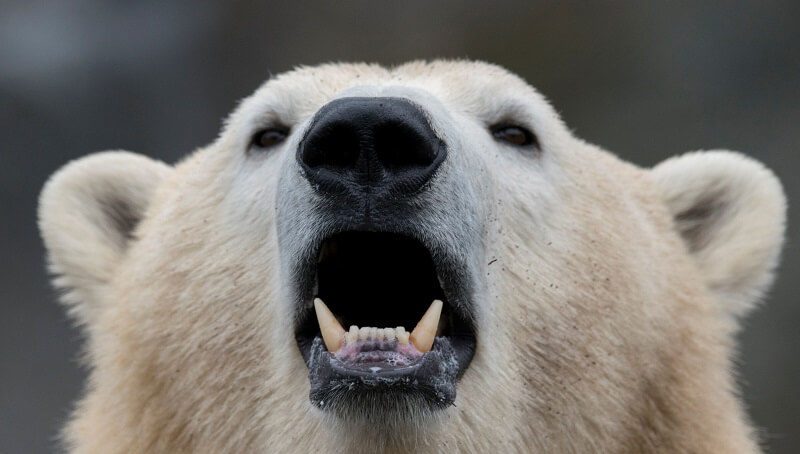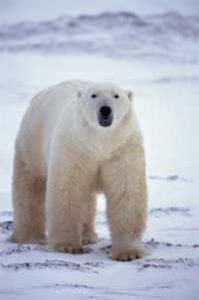
Why Hasn’t My Dog Urinated for Over 12 Hours?
August 25, 2022
Why is My Dog Acting Drunk and Wobbly?
August 26, 2022
The polar bear is the largest species in the bear family Ursidae. In its homeland, in the Arctic, it is undoubtedly the “king of beasts”, as it has no natural enemies.
Polar bears live on the ice of the circumpolar arctic. There are about 20 populations that almost do not mix with each other and vary greatly in size. The total population of the world is about 22-27 thousand polar bears.
It’s a fascinating animal that roams across the Arctic Ocean, through Norway, Russia, Greenland, Canada, and Alaska. It lives in far away, remote places, in small groups of 150-200 individuals, and it increasingly faces its number 1 threat: the man.
Although they advance on land up to a distance of 200 kilometers from the sea, during the winter months they live near ice or even on ice.
Why is the polar bear considered dangerous?
The Polar bear is a perfect hunter who most of the time lurks its prey like lions or tigers. It feeds mostly on seals, being specialized in hunting animals, as well as fish, but it is also capable of killing animals much larger than itself, such as walruses or even beluga whales and narwhals.
Polar bears do not hibernate like brown bears but are active all year round. Unlike all other carnivorous mammals, polar bears do not have bordered territories to defend themselves, but they roam the vastness of the Arctic wilderness continuously throughout their lives. Since males do not fight for territory, the only battles they go through are for a seal or walrus carcass, or for females during mating.
You might also like my articles on whether koalas, bearded dragons, and rhinos are dangerous.
The polar bear has no natural enemies or predators except for specimens of the same species. The lack of food sometimes leads them to acts of cannibalism, along with the situation where mature males kill the young to force the females back into heat. Otherwise, it seems that even whales don’t dare to attack them. Also, man and his activities endanger their existence.
Do Polar Bears Attack Humans?
Polar bears’ hunting instinct is unusually developed, and tundra or ice desert conditions allow them to see prey from miles away, making it very hard for animals to hide from them. Seeing a human, this predator can show curiosity or it can watch and then attack.
Particularly aggressive are those individuals who have already gotten in contact with poachers in the past and suffered because of their actions. They tend to attack people unconditionally.
Thus, bears can indeed be dangerous to humans, and some of their species pose a real threat. It is worth knowing that competent behavior and calm can often save you even through direct contact with predators, but it is best not to meet them at all.
Why do polar bears become more aggressive?
 In short, they are not. We simply see more of them as their natural habitats melt away, and more encounters mean more dangerous incidents.
In short, they are not. We simply see more of them as their natural habitats melt away, and more encounters mean more dangerous incidents.
Climate change is believed to be responsible for the increased encounters with polar bears. It is a recorded fact that their homes are warming up in their Arctic. They prefer to do all their hunting on ice joints at sea. But the ice pools and coasts they live on melt, forcing them to roam the land, leading to more encounters between polar bears and human beings.
The feeling regarding the dangerous beast is mutual – and they see you too as a threat. In addition, if they have been forced to land outside their usual hunting grounds, they are probably confused, panicked, hungry and desperate, and without seals in their belly, so they seek to eat. Meeting a polar bear on your territory, not on its territory, is an unpleasant encounter, especially if it is a protective mother bear with its cubs.
All data indicate that polar bears as a species are at risk, either from marine pollution or from climate change, and more encounters with desperate “lost” polar bears won’t end well. They have also been seen at sea. They are so powerful swimmers that oil rigs and boats at sea, far from the shore, have seen polar bears swimming in search of food, who often drown in exhaustion.
How to Survive a Polar Bear Attack?
They are also dangerous because they are apex-skilled predators. They can easily defeat a man and crush his head with a punch of their paws. This means that as cute as it is, the polar bear is functionally the great white shark of the north.
Its translucent fur camouflages it, its nose can smell you for miles, its paws grip ice and snow better than your shoes do, and despite its brute force, it is an agile predator both on land and in the sea. If you notice one, the polar bear already knows you’re there, just because of its sense of smell.
The best approach is to move away slowly. The rapid movement will likely cause an attack, either because it feels threatened or because your collation will cause it to see you as prey. Not that they’re a major threat to humanity or anything like that; they’ve killed less than 20 people in the last 20 years in Canada.
However, you have no chance against something that weighs over 600 pounds, so yes, take the observations and warnings of polar bears that you hear more often lately, seriously. Avoid unprotected meetings and stay safe.
